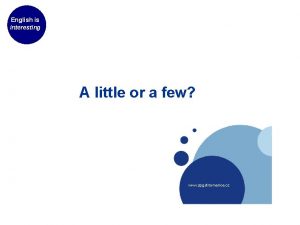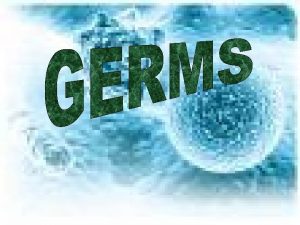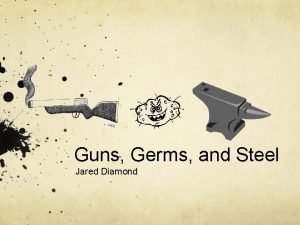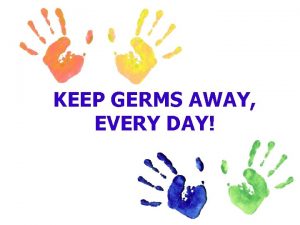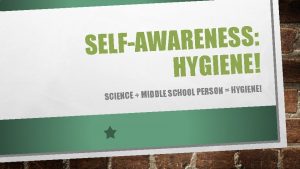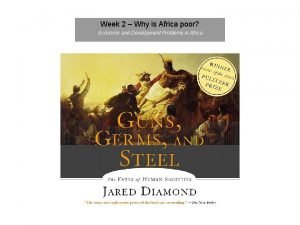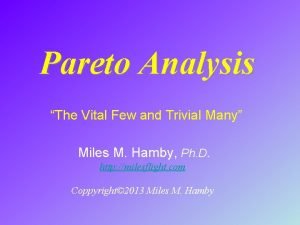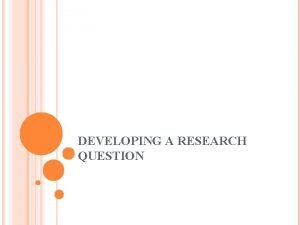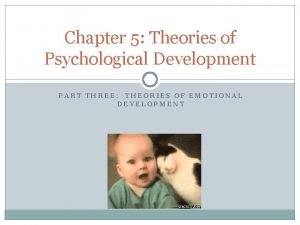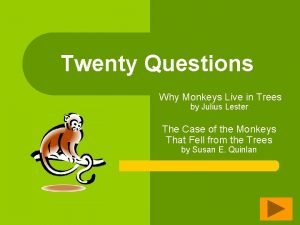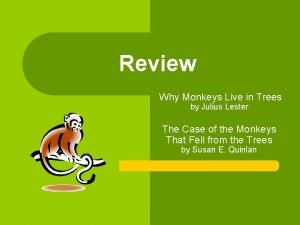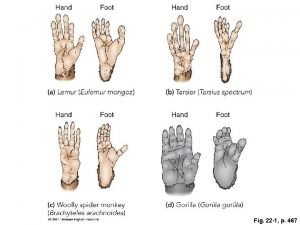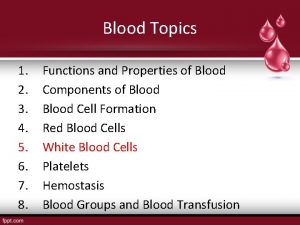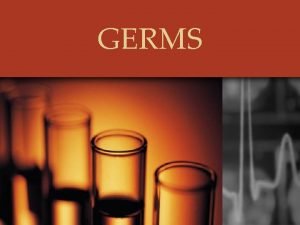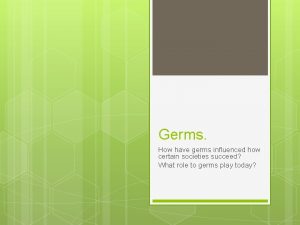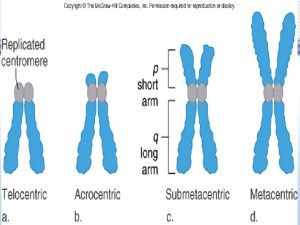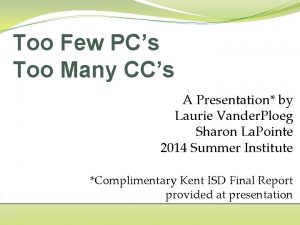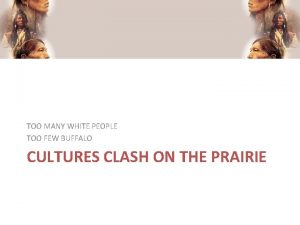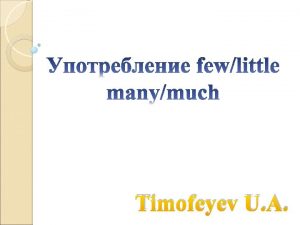Too Many Germs Too Few Monkeys The Need







































- Slides: 39

Too Many Germs, Too Few Monkeys The Need for Artificial Organisms for Testing and Validating Pharmaceuticals Drug Information Association 2003 Annual Meeting Counter-Terrorism Session San Antonio, Texas June 17, 2003 Michael J. Hopmeier Chief, Innovative and Unconventional Concepts Presentation © Unconventional Concepts Inc. Unconventional Concepts, Inc. 425 E. Hollywood Blvd, Suite A Mary Esther, FL 32569 (850) 243 -4411, Fax (850) 243 -5279 hopmeier@gnt. net 1

Presentation © Unconventional Concepts Inc. 2

“Anthrax Letters” Presentation © Unconventional Concepts Inc. 3

“Anthrax Letters” Mediastinal Lymph Node: Microcolonies of. B. anthracis (Giemsa stain) (www. phil. CDC. gov) Presentation © Unconventional Concepts Inc. 4

Varying Presentations of Cutaneous Anthrax Lesions in New York City Presentation © Unconventional Concepts Inc. 5

Tularemia Presentation © Unconventional Concepts Inc. 6

Staphylococcal Ecthyma in HIV Presentation © Unconventional Concepts Inc. 7

Accidental Vaccinia Presentation © Unconventional Concepts Inc. 8

Bubonic Plague Presentation © Unconventional Concepts Inc. 9

Plague History • 200, 000 deaths • Major Pandemics - Plague of Justinian - “Black Death” - Modern Pandemic Presentation © Unconventional Concepts Inc. 10

Plague Epidemiology Vector (flea) 4 Bacteria block gut 4 Feeding frenzy Host (mammal) 4 Rattus rattus (antiquity) 4 Squirrels, cats, coyotes, bobcats Presentation © Unconventional Concepts Inc. 11

Smallpox “The patient presents an image that fully justifies the horror and fright that is associated with smallpox in the public’s mind. ” —William Osler Presentation © Unconventional Concepts Inc. 12

Severe Acute Respiratory Syndrome (SARS) Crisis Center The lobby of Block E of Amoy Gardens was turned into a field headquarters for Hong Kong police and health officials after a SARS outbreak in the housing development. Time Magazine, April 7, 2003 Presentation © Unconventional Concepts Inc. 13

SARS Virus Coronavirus from SARS isolated in FRh. K-4 cells. Thin section electron micrograph and negative stained virus particles Presentation © Unconventional Concepts Inc. Source: Department of Microbiology, The University of Hong Kong and the Government Virus Unit, Department of Health, Hong Kong SAR China 14

African Green Monkey (Cercopithecus aethiops) AKA vervet Presentation © Unconventional Concepts Inc. 15

Olive Baboon (Papio anubis) Presentation © Unconventional Concepts Inc. 16

Rhesus Macaque (Macaca mulatta) Presentation © Unconventional Concepts Inc. 17

Cynomolgus Macaque (Macaca fascicularis), AKA crab-eating or long-tailed macaque Presentation © Unconventional Concepts Inc. 18

Squirrel monkey (Saimiri sciureus) Presentation © Unconventional Concepts Inc. 19

Common Marmoset (Callithrix jacchus) Presentation © Unconventional Concepts Inc. Cotton-Top Tamarin (Saguinas oedipus) 20

Northern Owl Monkey (Aotus trivirgatus) Presentation © Unconventional Concepts Inc. 21

World Medical Association Declaration of Helsinki June 1964 4 The Declaration of Geneva of the World Medical Assembly binds the physician with the words, “The health of my patient will be my first consideration. ” 4 “The purpose of biomedical research involving human subjects must be to improve diagnostic, therapeutic and prophylactic procedures and the understanding of the aetiology and pathogenesis of disease. ” 4 Special caution must be exercised in the conduct of research which may affect the environment, and the welfare of animals used for research must be respected. 4 Biomedical research involving human subjects must conform to generally accepted scientific principles and should be based on adequately performed laboratory and animal experimentation and on a thorough knowledge of the scientific literature. Presentation © Unconventional Concepts Inc. 22

Animal Testing— Nuremberg Trials 4 “ 2. The experiment should be such as to yield fruitful results for the good of society, unprocurable by other methods or means of study, and not random and unnecessary in nature. 4 “ 3. The experiment should be so designed and based on the results of animal experimentation and a knowledge of the natural history of the disease or other problem under study that the anticipated results will justify the performance of the experiment. ” THE NUREMBERG CODE [from Trials of War Criminals before the Nuremberg Military Tribunals under Control Council Law No. 10. Nuremberg, October 1946–April 1949. Washington, D. C. : U. S. G. P. O, 1949– 1953. ] Presentation © Unconventional Concepts Inc. 23

What—Exactly—Is the Problem? • Shortage of acceptable animal models for testing of biological countermeasures – – Availability at all Immunologically naïve Cost effective Efficacious • Lack of facilities – Brick and mortar – Personnel Presentation © Unconventional Concepts Inc. 24

Why Now? • Anthrax and public awareness • New incentives – Bioshield – Pharmaceutical stockpiles – Public demand for increased safety and efficacy – Multi-drug resistance – Greater susceptible populations • MARKET PRESSURE! Presentation © Unconventional Concepts Inc. 25

Some Root Causes • Rapidly expanding BW research is increasing demand – No-cure diseases mandating animal trials – Lots of federal money • Purpose-raised supplies are being tapped out and are insufficient to meet needs • Increased regulatory involvement and more rigorous controls • China and India have greatly curtailed exports – SARS – Politics Presentation © Unconventional Concepts Inc. 26

Some Root Causes • • • Aging infrastructure Reduced funding to Primate Center System Continued pressure on available primates for other research FDA requirements on the pharmaceutical industry Increasing pressure from eco-terrorists and animal rights groups reducing participation from organizations • Human encroachment reducing environment and population sizes • Restrictions on exportation in countries of origin • Increasing difficulty in animal transportation – Modes (commercial airlines, ground) – Regulatory issues (IATA) – Politics (Interim Guidelines, CDC; pressure on carriers) Presentation © Unconventional Concepts Inc. 27

Other Issues • Biological sciences becoming more rigorous and demanding more control – Increasing need for “standardized” tests and subjects – More subtle and sensitive techniques increasingly being used – Science is becoming more “sensitive” • Biology is moving from “art” to “science” and requires more rigorous “controls” on experiments Presentation © Unconventional Concepts Inc. 28

What We Need • Ability to scale and adapt to changing volume and quantity demands • Support ever more rigorous scientific challenges and research • Provide efficacious data that can be validated for use in human models • Meet the challenges of today and tomorrow Presentation © Unconventional Concepts Inc. 29

One Possible Path Forward • Short Term (1– 2 years) – Better and more effective utilization of current resources – Better coordination between public/private organizations • Mid Term (3– 10 years) – Rebuild “brick and mortar” infrastructure to modern standards and predicted needs – Increase training and education to address shortfalls in skilled personnel – Design and implement special-purpose breeding programs • Long Term (10 years and out) – Enhanced tissue constructs Presentation © Unconventional Concepts Inc. 30

Short Term (1– 2 Years) • Identify and inventory existing stocks of NHPs • Identify and inventory existing facilities – Breeding – Experimentation – Isolation – Transportation – Worldwide Presentation © Unconventional Concepts Inc. 31

Short Term (1– 2 Years) • Evaluate current and near-term requirements – Public and private – Based on both national security and economic pressures • Prioritize efforts within the U. S. government • Coordinate with industry (to the extent possible) • Maintain updated information for continuous predictions Presentation © Unconventional Concepts Inc. 32

Mid-Term (3– 10 Years) • Design and construct “modern” facilities for breeding, housing and experimenting with NHPs • Design and implement large-scale breeding programs to meet predicted needs • Set aside colonies to meet demand during periods of national emergency or pandemics • Centralize colonies and animal processing facilities, as well as specialized experimentation resources – Built around academic organizations – “Centers of Excellence” – Public/private venture Presentation © Unconventional Concepts Inc. 33

Mid-Term (3– 10 Years) • Personnel! – Significant Shortage of skilled technicians – Effects all levels of research • Instrumentation design and manufacture • Facility design and manufacture • Experimental design and implementation • Institute aggressive training and recruiting programs Presentation © Unconventional Concepts Inc. 34

• Mid-Term (3– 10 Years) Personnel Alarming potential for large vacancy rate in laboratory positions – Over the next 5 years, an estimated availability of 45, 000 positions for clinical laboratory professionals (increased demand plus retirement/change of job) – Only 20, 000 lab graduates expected across the same time period; potential downfall of 25, 000 – The current 12% vacancy rate in these positions compounds the deficit • Education and number of science students decreasing despite increasing need – Educational programs for clinical laboratory scientists and technicians dropped from 617 in 1995 to 480 in 2001 – 10% decline in science-related bachelor’s degrees – Reduction in the number of foreign science graduates due to U. S. visa restrictions and increasing incentives from their home countries Presentation © Unconventional Concepts Inc. 35

Long Term (10+ Years) ALTERNATIVES TO ANIMAL MODELS • Models and Simulations – Increase sophistication and efficacy – Develop new techniques for measurement and diagnostics – Move from specific mechanisms to tissues to organisms – Develop agreed-on standards for creating and interfacing models (similar to the Human Genome Project) • Artificial systems Presentation © Unconventional Concepts Inc. 36

Long Term (10+ years) • Artificial Systems – Artificial Grown Tissues • Skin cultures • Cloning – Artificial Organs – Artificial “organisms” • Not necessarily actual organism, but sufficient for testing • Possibly an “artificial immune system” Presentation © Unconventional Concepts Inc. 37

Long Term (10+ Years) • DARPA Engineered Tissue Constructs Program • Explores the technologies and science leading to the creation of a 3 -D ex vivo human immune system. • To be used for testing new vaccine constructs and immunomodulators that provide superior protection against threat agents. • Brings together a combination of science and engineering communities Presentation © Unconventional Concepts Inc. 38

Summary • The world has changed, and so must biomedical research • We are going to hit major bottlenecks very soon in research • Infrastructure and especially NHP research will become a major impediment soon • We must be smarter in our use of our current resources • We must find alternatives, not only to do better science, but also from an ethical standpoint Presentation © Unconventional Concepts Inc. 39
 She is lucky she has few problems
She is lucky she has few problems Kahoot enough too
Kahoot enough too Primates characteristics
Primates characteristics Högkonjuktur inflation
Högkonjuktur inflation Fill in a little or a few
Fill in a little or a few Complete the sentences with a little or a few
Complete the sentences with a little or a few Few ja a few ero
Few ja a few ero Science project setup
Science project setup Science fair logbook setup
Science fair logbook setup I-need-a-few-pointers-98hpou5
I-need-a-few-pointers-98hpou5 Germs
Germs Spread cheer not germs
Spread cheer not germs Germs are tiny
Germs are tiny Fertile crescent
Fertile crescent Keep germs away
Keep germs away Selfawa
Selfawa Guns germs and steel worksheet
Guns germs and steel worksheet Guns germs and steel summary
Guns germs and steel summary Put in a lot a lot of much many
Put in a lot a lot of much many Vital few trivial many
Vital few trivial many A lot of vs much many
A lot of vs much many Few snow or little snow
Few snow or little snow 1 samuel 14:1-23
1 samuel 14:1-23 Too big too small just right
Too big too small just right Too broad too narrow
Too broad too narrow Here you are too foreign for home
Here you are too foreign for home Research question
Research question Too anointed to be disappointed meaning
Too anointed to be disappointed meaning Too broad and too narrow examples
Too broad and too narrow examples Too broad and too narrow examples
Too broad and too narrow examples Harlow monkeys
Harlow monkeys Old world monkeys
Old world monkeys Monkey's paw plot diagram
Monkey's paw plot diagram Monkeys live in trees
Monkeys live in trees Hominoids
Hominoids Monkeys live in or on trees
Monkeys live in or on trees What is the answers
What is the answers Fig 22
Fig 22 Never let monkeys eat bananas
Never let monkeys eat bananas Monkeys can climb poem
Monkeys can climb poem
